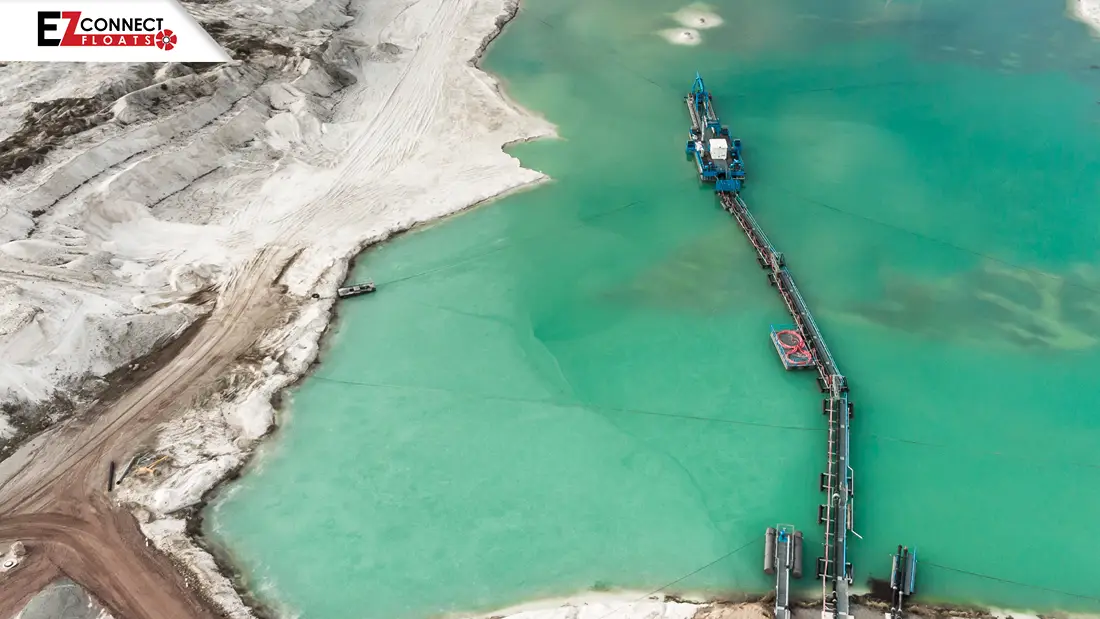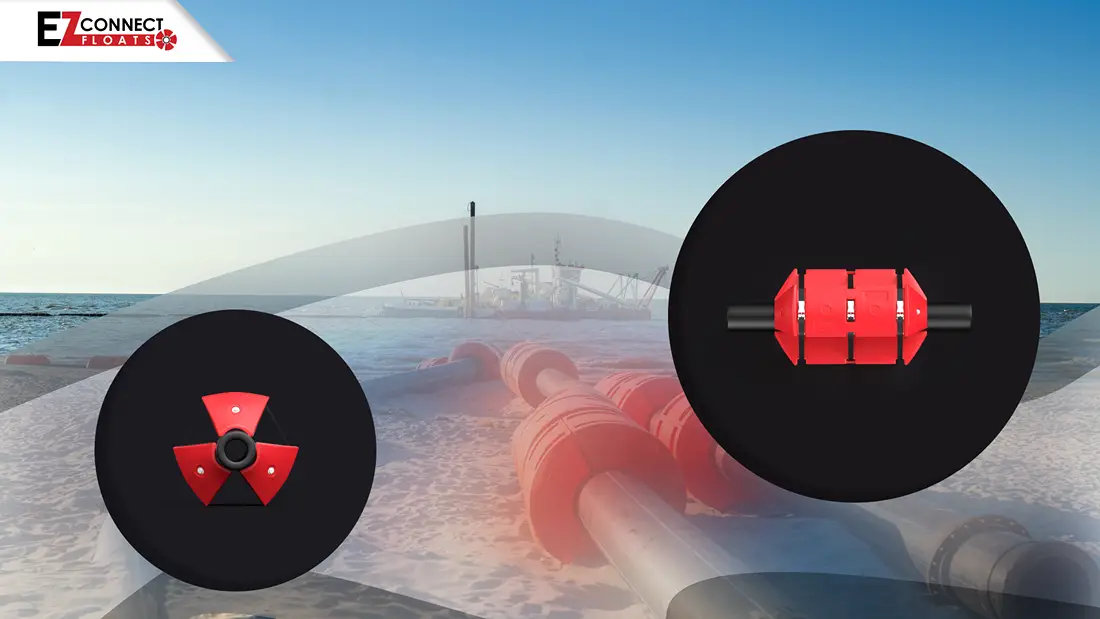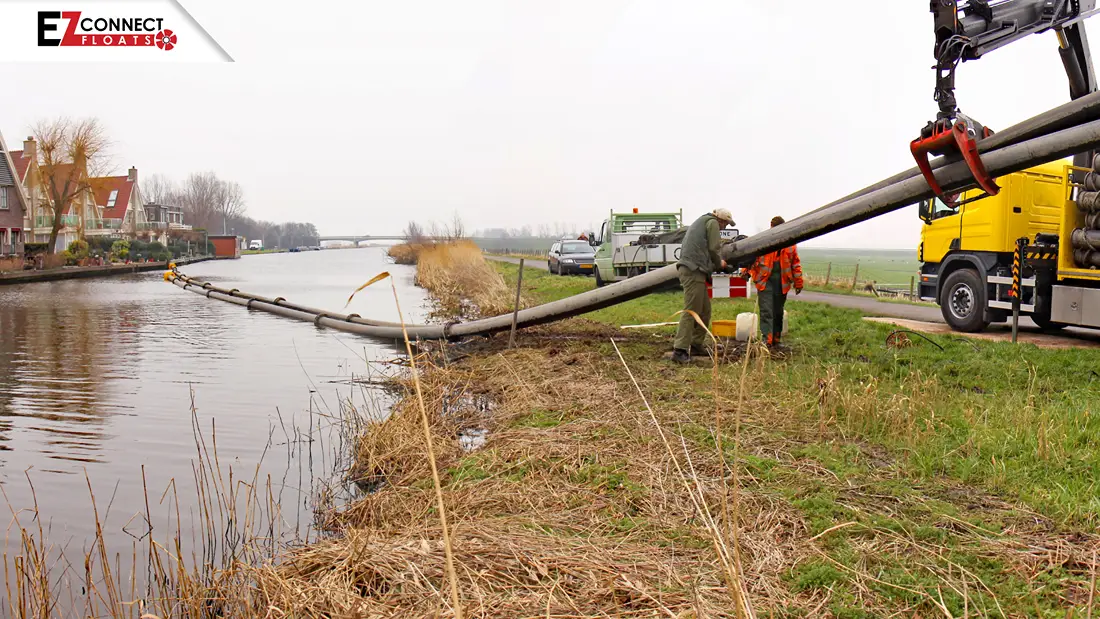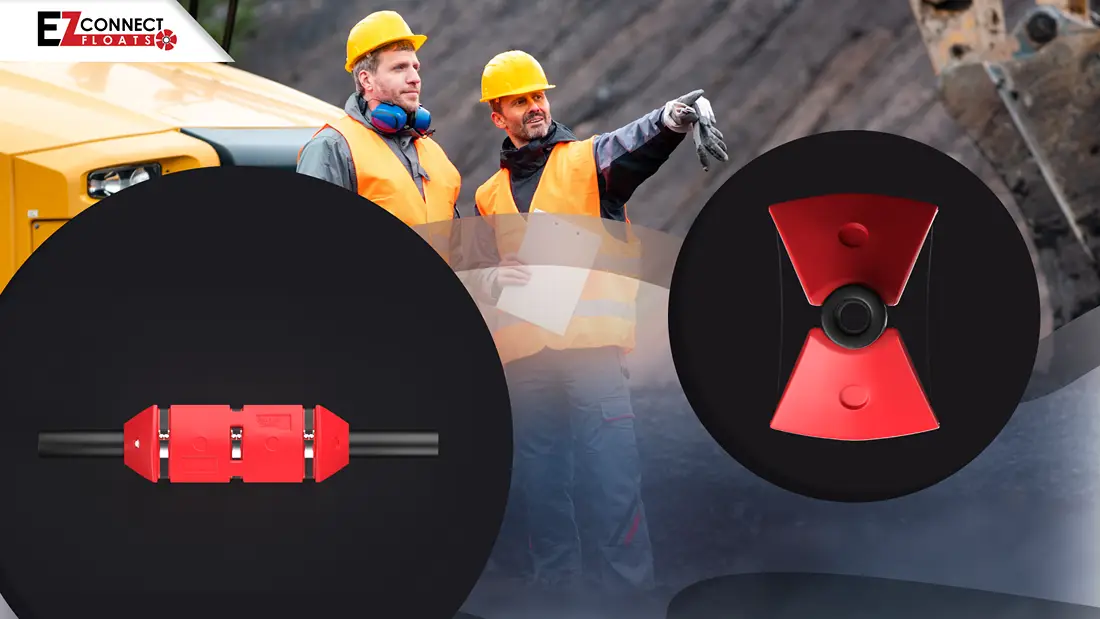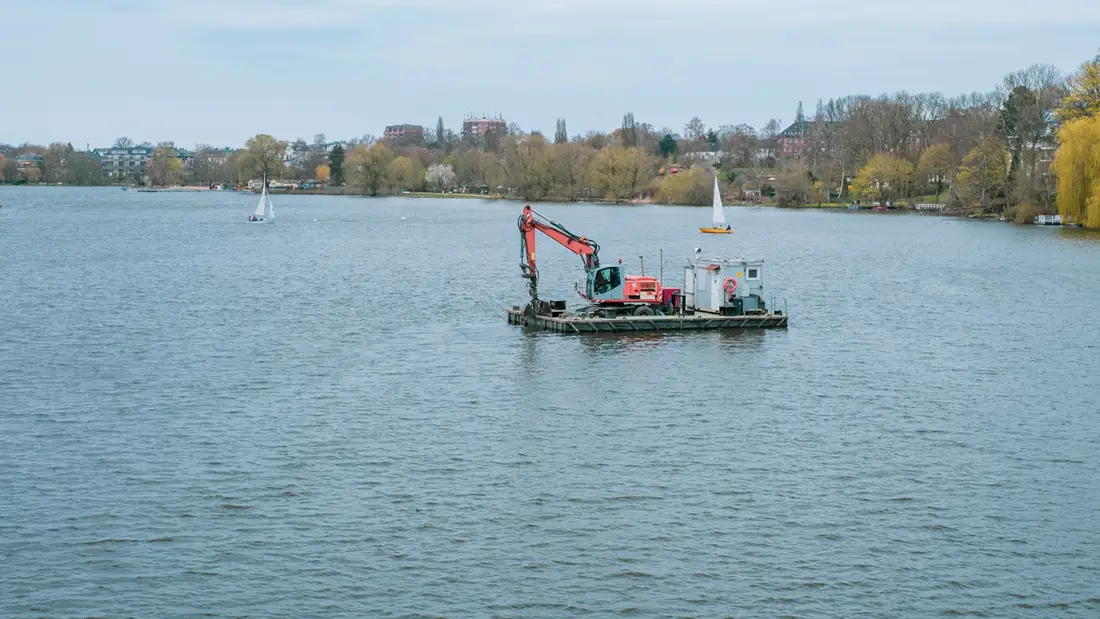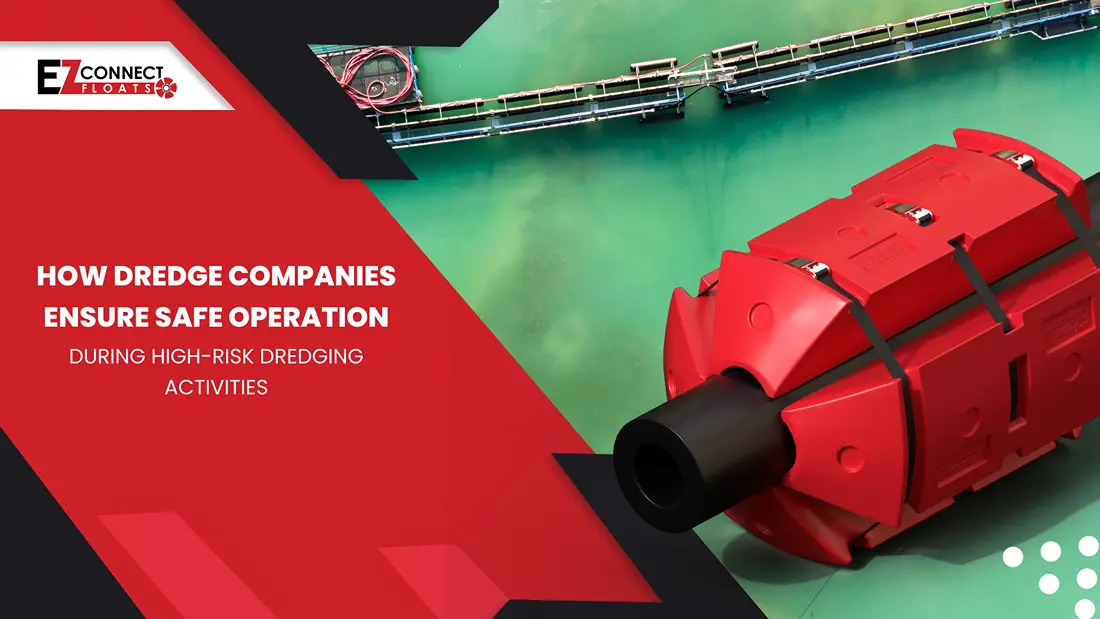
Dredging Companies Ensuring Safe Operation in Dredging
Dredging is an essential activity in many industries, from construction and infrastructure development to environmental conservation. It involves the excavation of materials, such as sediment or debris, from the bottom of bodies of water. While dredging is crucial for maintaining waterways, harbors, and coastlines, it can also present significant risks due to the challenging environments in which dredging occurs. These risks make safety a paramount concern for dredge companies, especially when engaging in high-risk dredging activities. In this blog, we will explore how dredge companies ensure the safety of operations during high-risk dredging projects through advanced equipment, strict safety protocols, expert teams, and rigorous training programs.
Understanding High-Risk Dredging Activities
Dredging, though essential for various industries such as construction, infrastructure maintenance, and environmental restoration, often occurs in challenging and hazardous environments.Below are some of the most common high-risk dredging activities and the associated challenges that dredge companies must overcome to maintain safe operations.
Deep-Sea Dredging
Deep-sea dredging is one of the most high-risk activities in the dredging industry, involving operations at significant depths in oceans or large bodies of water. Dredge companies undertaking deep-sea dredging must carefully address these issues to ensure the safety of their crew, the environment, and the integrity of the operation.
One of the primary hazards associated with deep-sea dredging is the extreme water pressure at great depths. The deeper the dredging, the more strain is placed on the machinery, which can result in mechanical failures if the equipment is not specifically designed to withstand these intense conditions. Dredge companies must ensure that their equipment is made from high-strength materials and rigorously maintained to avoid catastrophic failures that could endanger workers or disrupt operations.
Another significant challenge of deep-sea dredging is low visibility. Poor visibility significantly hinders the ability of operators to monitor the dredging process, detect potential obstacles like underwater rocks, wrecks, or marine life, and respond to unforeseen issues quickly. To overcome these challenges, dredge companies often rely on advanced technology, such as underwater robots (ROVs) equipped with cameras and sensors. These devices allow for real-time monitoring of the dredging site, helping operators assess conditions and make informed decisions during operations.Dredge companies must carefully plan their operations, using real-time data from sonar systems and GPS technology to track currents and adjust their activities accordingly.
Deep-sea dredging also requires dredging vessels and equipment to withstand the extreme conditions of the ocean floor, including rough seas, strong tides, and the risk of encountering large underwater obstacles like submerged rocks or old shipwrecks. As a result, dredge companies must employ high-quality materials and advanced technology to ensure that both personnel and equipment are protected throughout the operation.
Dredging in Turbulent Waters
Dredging in areas with turbulent waters, such as those with strong currents or large waves, is one of the most high-risk activities in the dredging industry. Dredge companies involved in these operations face unique challenges that require exceptional skill, experience, and specialized equipment to ensure both safety and efficiency.
To mitigate these risks, dredge companies rely on specialized equipment designed specifically for dredging in turbulent waters. This equipment is built to withstand the forces of strong currents and waves, ensuring that the operation remains stable and functional. Dredging companies also carefully plan their operations, taking into account real-time weather and water conditions. They may use advanced technology, such as weather monitoring systems and GPS, to track water movements and adjust operations accordingly. These strategies help minimize the risk of accidents and ensure the safety of the crew and the surrounding environment during high-risk dredging activities in turbulent waters.
Underwater Excavation
Underwater excavation is one of the most challenging dredging activities, often taking place in murky or deep waters where visibility is severely limited. The uncertainty of the underwater environment makes these operations particularly risky, and dredge companies must ensure that their teams are equipped with the right tools and technologies to minimize these risks.
To mitigate these challenges, dredge companies often rely on advanced underwater sensors, remotely operated vehicles (ROVs), and sonar systems to gain better visibility and monitor operations in real time.
Sediment Handling
Handling sediment dredged from the bottom of water bodies is a high-risk aspect of dredging operations that requires careful management. Sediments often contain hazardous materials such as heavy metals, chemicals, or pollutants, which can pose serious environmental risks if disturbed during dredging activities. Dredge companies need to be especially vigilant in these situations, as disturbing these materials can release toxins into the water, contaminating ecosystems and harming aquatic life.
To mitigate these risks, dredging companies adopt stringent protocols for the safe handling, disposal, and treatment of dredged materials. This often involves using specialized equipment to safely remove contaminated sediment and transport it to disposal sites designed to manage hazardous waste. Furthermore, dredge companies ensure that their teams are thoroughly trained in safety procedures to protect workers from exposure to dangerous chemicals and pathogens. By maintaining rigorous safety standards and employing advanced techniques, dredging companies can reduce the environmental impact and ensure the safety of both their workers and the surrounding ecosystem.
Advanced Equipment Used by Dredge Companies
One of the key ways dredge companies ensure safety during high-risk dredging activities is through the use of advanced equipment. Let’s take a closer look at some of the equipment used by dredging companies:
Dredgers
A dredger is a large, powerful machine that removes sediments from the bottom of a body of water. There are several types of dredgers, each designed for specific conditions and tasks:
- Cutter suction dredgers: These are used in deeper waters and have a rotating cutter head that loosens the material before it is suctioned up and transferred to the surface. Cutter suction dredgers are particularly useful for dealing with tough or compacted sediments.
- Trailer suction dredgers: These dredgers are more suited for shallow areas and use a suction pipe to collect sediments, which are then pumped to a location for disposal or further processing.
- Hydraulic dredgers: These dredgers use water pressure to loosen and transport sediments, making them ideal for working in environments where minimal disturbance is desired.
Each type of dredger is equipped with advanced monitoring systems that allow dredge companies to track performance, adjust operations, and identify any potential issues before they escalate into dangerous situations.
Dredging Vessels
Dredging operations rely on specialized vessels designed to operate in harsh marine environments. Dredge companies use these large vessels, which are equipped with stabilizing features to ensure steady performance even in rough waters. The stability of these vessels is critical to maintaining the safety of the crew and ensuring that the dredging equipment operates efficiently. By utilizing advanced vessel technology, dredge companies can conduct operations with minimal risk in challenging conditions.
Underwater Robots and Sensors
In high-risk dredging activities, visibility can be a significant issue, especially when working in deep or murky waters. To address this, dredge companies utilize underwater robots (ROVs – remotely operated vehicles) and sensors that provide real-time data about the underwater environment. These robots are equipped with cameras, lights, and other sensors to help dredging teams monitor the progress of the excavation and make informed decisions.
Advanced sonar systems and GPS technology allow dredging companies to map the seabed accurately and avoid hazards.
Safety Systems and Monitoring
Dredge companies also employ a range of safety systems and monitoring tools to ensure the safety of the crew. For example, many dredging vessels are equipped with alarm systems that notify the crew of any changes in conditions, such as rising water levels or equipment malfunctions.
Strict Protocols and Safety Standards
To ensure the safety of high-risk dredging operations, dredge companies adhere to a variety of protocols and industry standards. These safety guidelines are established by regulatory bodies and are continuously updated to reflect the latest best practices in the industry.
Compliance with Regulatory Standards
Dredge companies must adhere to strict safety regulations set by various governing bodies depending on their region of operation. In the United States, dredging companies are required to comply with standards set by the Occupational Safety and Health Administration (OSHA), the U.S. Army Corps of Engineers, and the Environmental Protection Agency (EPA). These regulations cover equipment operation, environmental impact, and worker protection. By following these guidelines, dredging company ensures that their operations are safe and environmentally responsible.
Risk Assessments and Safety Planning
Before beginning any dredging project, dredge companies conduct thorough risk assessments. These assessments involve identifying potential hazards, evaluating the likelihood of accidents, and determining the necessary safety measures to reduce those risks.
Once risks are identified, the dredging company creates a safety plan that includes detailed procedures for operating equipment, conducting emergency drills, and maintaining communication among the crew.
Environmental Protection Protocols
Dredging activities can have an impact on the surrounding environment, and dredge companies take steps to minimize these effects. Environmental protection protocols may include measures to protect marine life, such as the use of silt curtains to prevent sediment from spreading to surrounding areas. Dredging companies must also ensure that the disposal of dredged material is done in compliance with environmental regulations.
Expert Teams and Training
The expertise of the dredging company’s team plays a significant role in ensuring safety during high-risk dredging activities.
Skilled Dredging Contractors
The team of experts employed by dredge companies includes dredging contractors, engineers, marine specialists, and safety officers. These professionals are highly trained and experienced in handling the complexities of dredging operations.
Comprehensive Training Programs
Dredging contractors undergo comprehensive training that covers a range of topics, including:
- Operational training: Contractors are trained to operate dredging equipment efficiently and safely, with a focus on understanding the unique conditions of each dredging site.
- Safety protocols: All team members are trained in the latest safety procedures, including emergency response, first aid, and hazard recognition.
- Environmental awareness: Dredging contractors are educated on the environmental impacts of dredging and how to minimize damage to ecosystems.
Ongoing Education and Certification
Dredge companies prioritize ongoing education and certification for their team members to stay current with the latest technologies and safety practices. Dredging companies invest in these programs to ensure that contractors are well-informed about industry regulations and best practices.
Why Choosing the Right Dredging Company is Key
When undertaking high-risk dredging projects, selecting the right dredging company is essential for ensuring safety and efficiency. Dredge companies with experience and a solid reputation are better equipped to handle the complexities of dredging operations.
Reputation
A reputable dredging company is one with a proven track record of effectively handling high-risk dredging operations. When selecting dredge companies, look for one that has successfully completed similar projects and has received positive client testimonials. A strong reputation demonstrates reliability, trustworthiness, and the capability to manage complex tasks while maintaining safety and operational efficiency. Choosing a well-regarded dredging company not only reduces potential issues during the project but also ensures that your investment is secure and the project will be completed to the highest standards.
Experience
Experience is another crucial factor when selecting a dredging company. Whether you require deep-sea dredging or dredging in challenging water conditions, it is essential to choose a dredging company with specific experience in the type of project you are undertaking. Experienced dredge companies are better equipped to anticipate potential issues, navigate obstacles effectively, and complete the project on time. Their expertise helps streamline operations and ensures that tasks are performed correctly from the start.
Safety Record
Always review the safety record of any dredging company you are considering for your project. A reputable dredging company will prioritize strict safety protocols and actively work to minimize risks throughout dredging operations. It’s essential to check their history of safety compliance, accident records, and the training provided to employees. Choosing dredge companies with a proven commitment to safety ensures peace of mind throughout the project’s duration.
Local Presence
If you’re searching for dredging contractors near me, selecting a dredging company with local expertise provides several key advantages. A local dredging company will have an in-depth understanding of the region’s specific safety regulations, environmental conditions, and potential challenges that could arise. This local knowledge ensures that your project complies with all regional laws and helps streamline operations. By choosing reputable dredge companies in your area, you reduce the risk of delays and unexpected complications, ensuring a more efficient and successful dredging project.
Conclusion
High-risk dredging activities require meticulous planning, advanced equipment, skilled contractors, and strict adherence to safety protocols. Dredge companies go to great lengths to ensure that every aspect of the operation is carried out safely to protect both their workers and the surrounding environment. By using state-of-the-art equipment, adhering to industry standards, and employing expert teams, dredge companies can reduce risks and complete challenging projects with confidence. When choosing a dredging company, it is essential to consider their safety record, expertise, and experience to ensure a successful, safe, and efficient dredging operation.
Have Questions?
Get in touch with us now!
Related Blogs
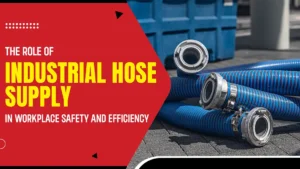
The Role of Industrial Hose Supply in Workplace Safety and Efficiency
In high-stakes industries such as oil and gas, mining, manufacturing, dredging, and defense, industrial hoses serve as vital connectors in daily operations. Whether transferring hazardous
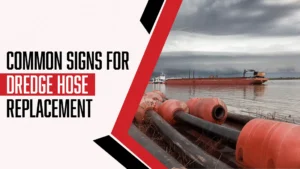
Common Signs For Dredge Hose Replacement
Dredge hose is an essential component in mining, oil and gas, and heavy industries, where it is used to transport materials such as sediment, slurry,

The Role of Automation and AI in Next-Generation Dredging Technology
Dredging technology has undergone a quiet but powerful transformation over the past decade. A purely mechanical process, which included heavy machinery, manual supervision, and reactive

